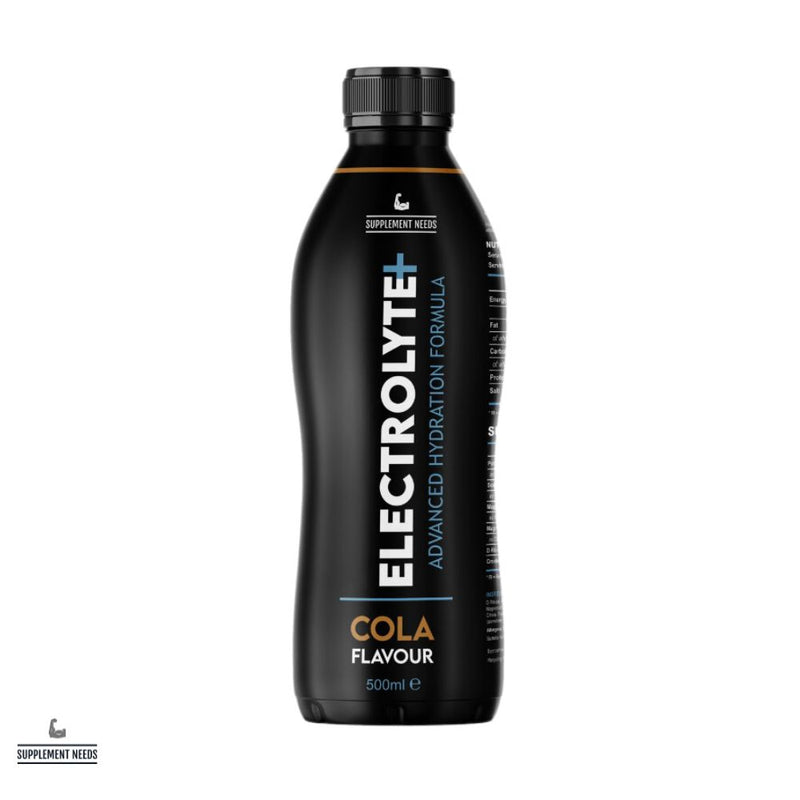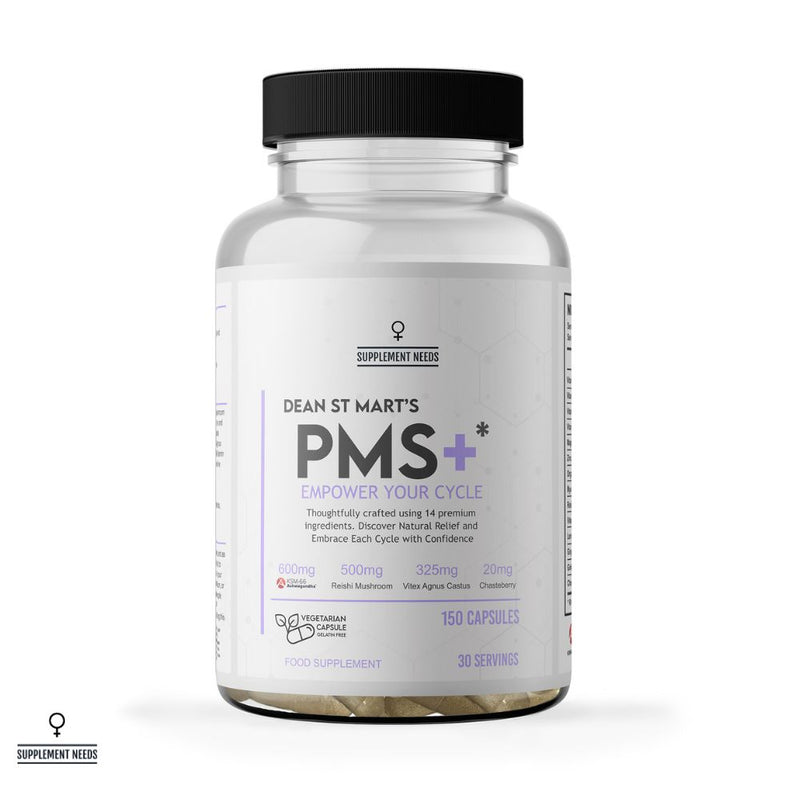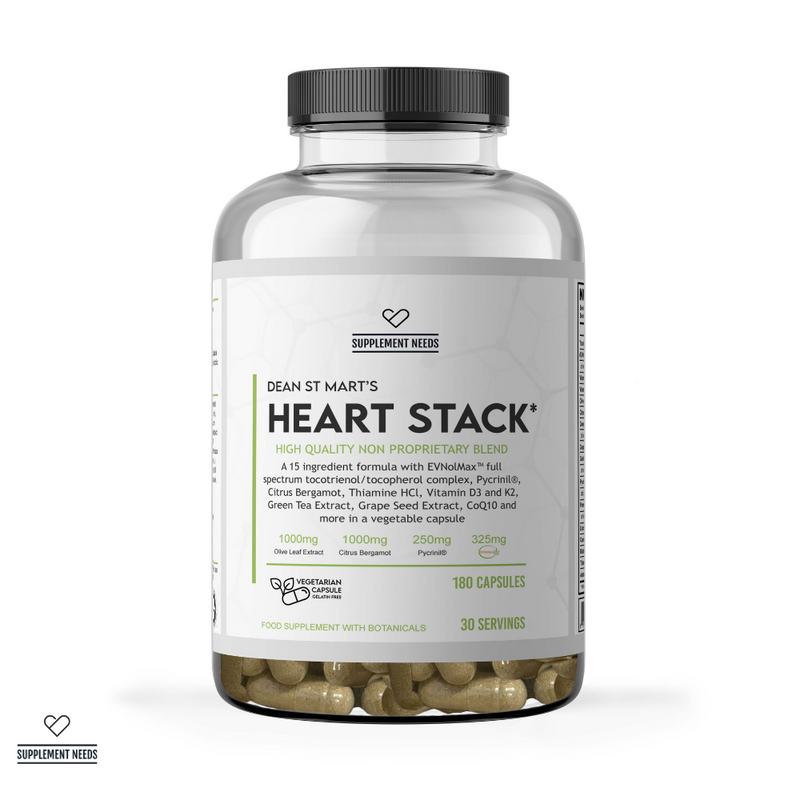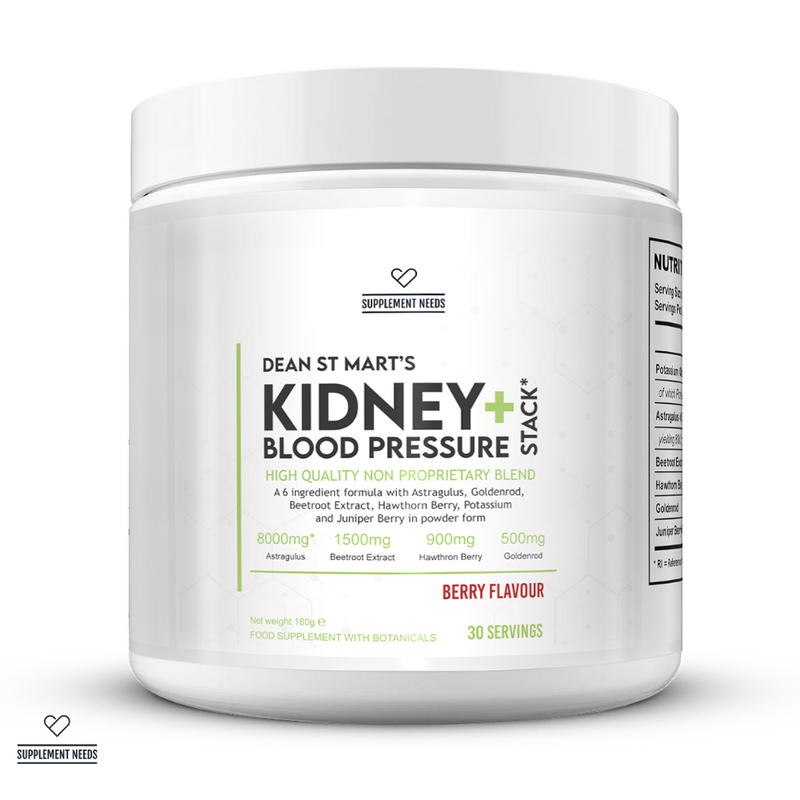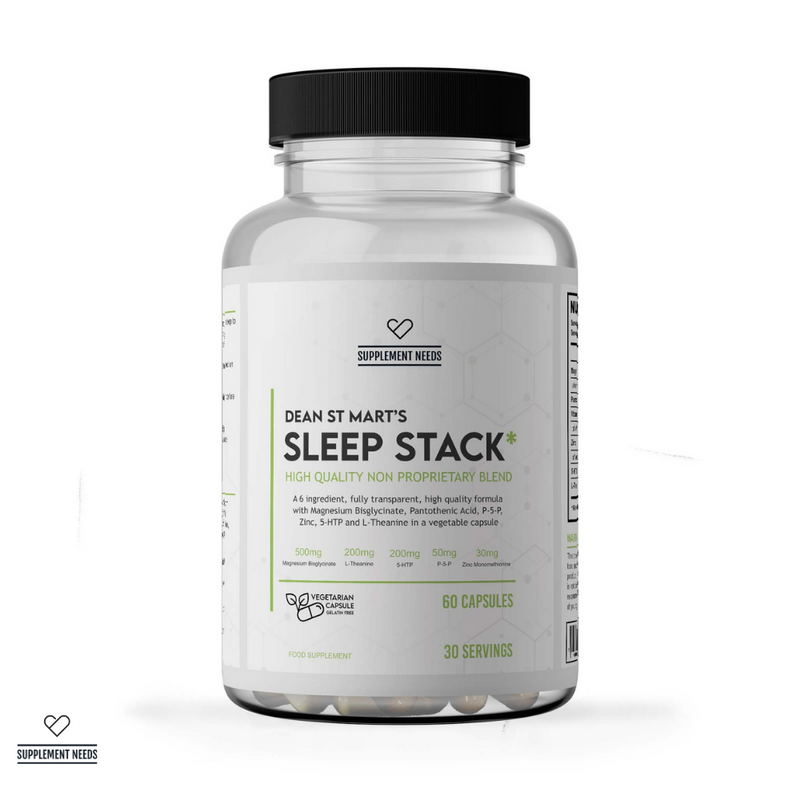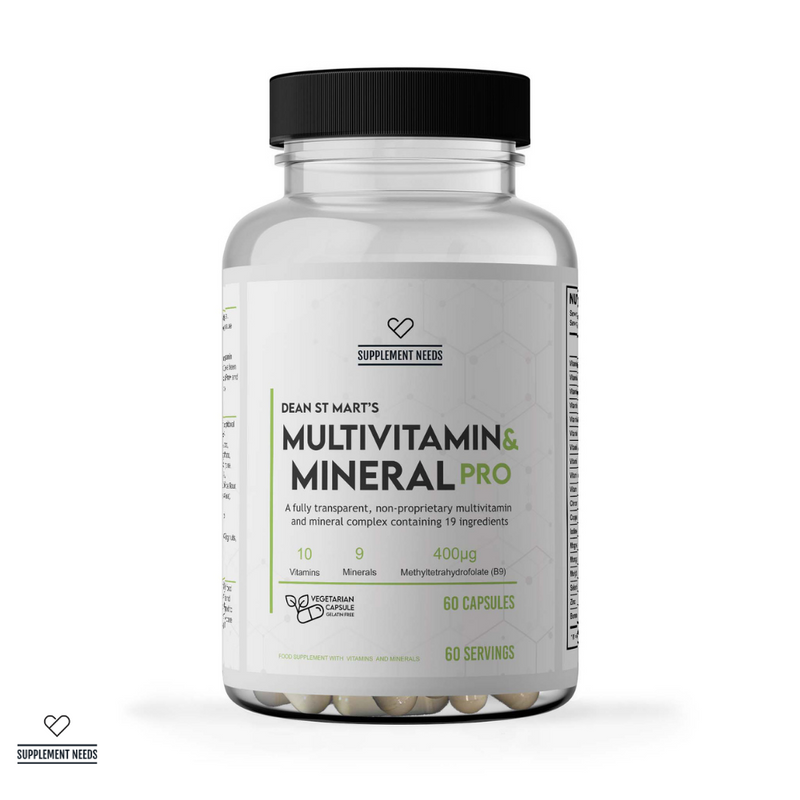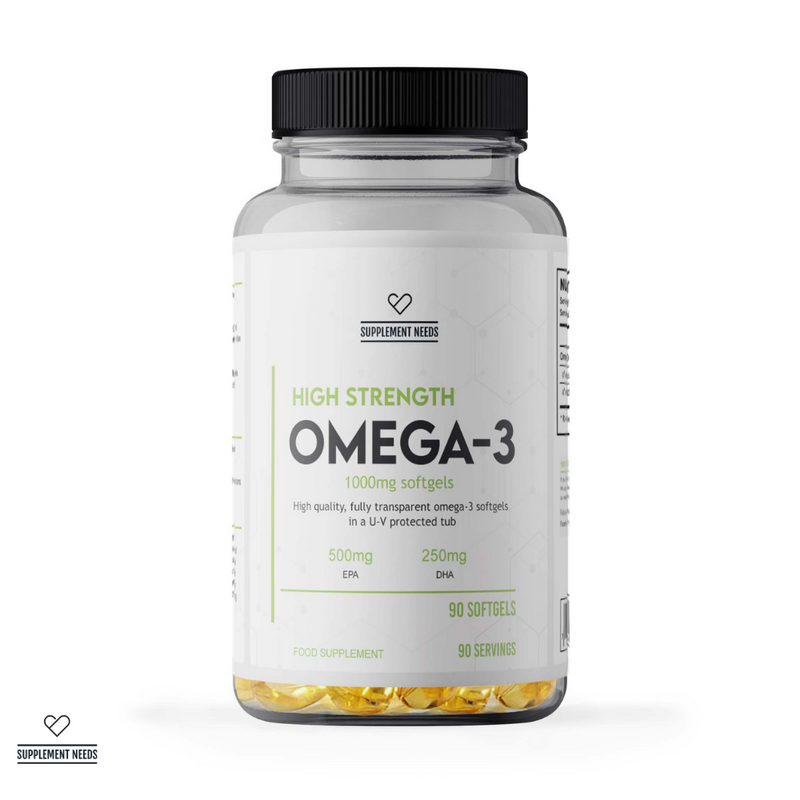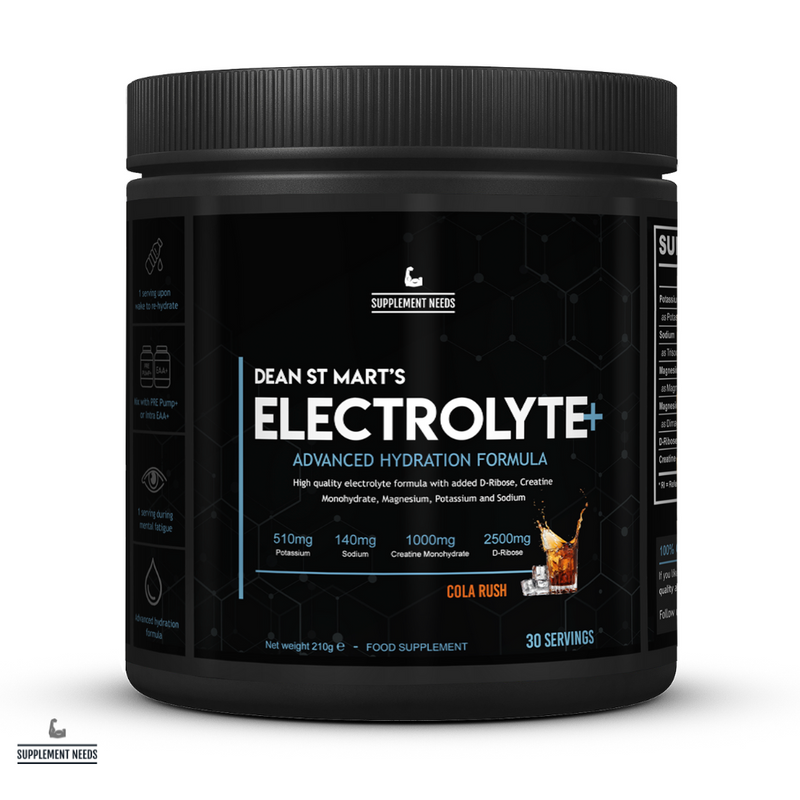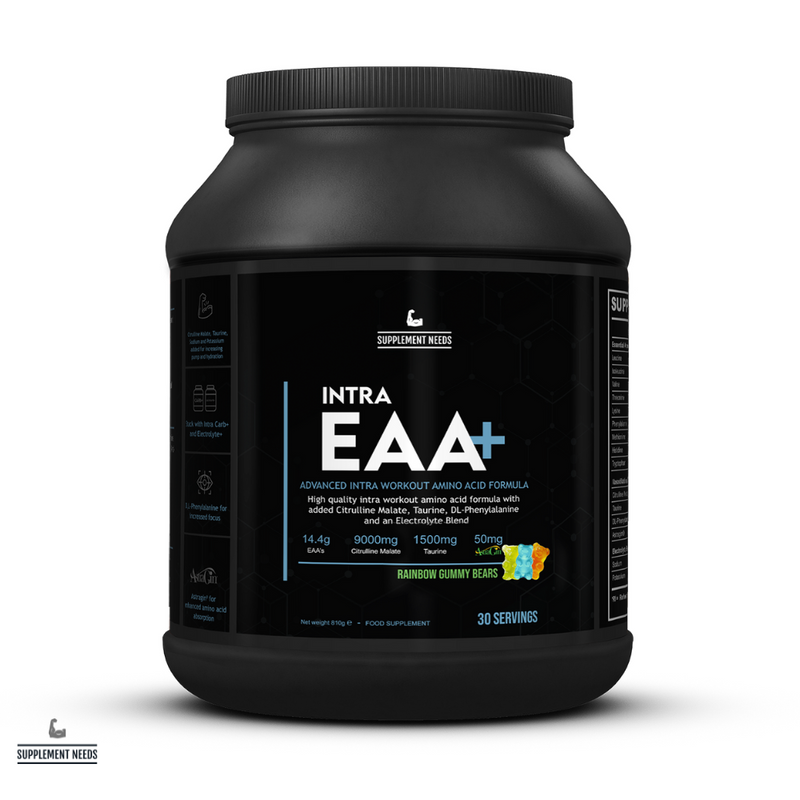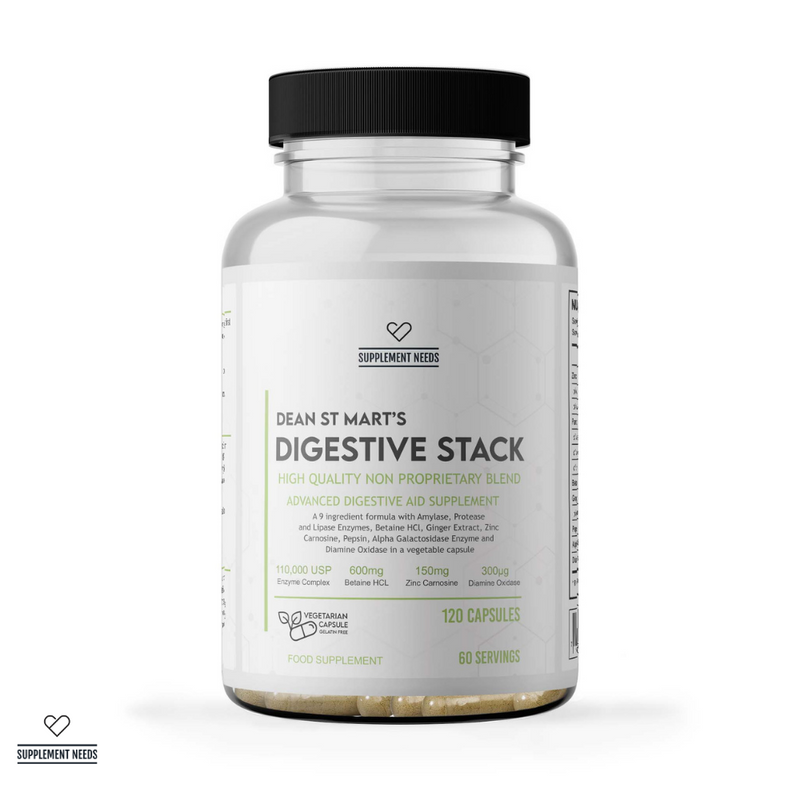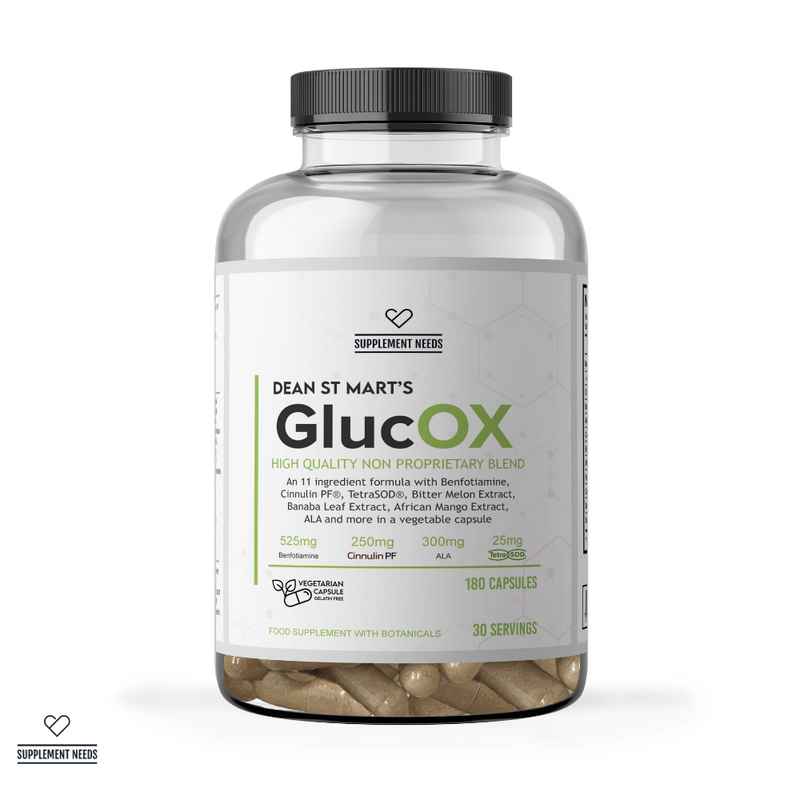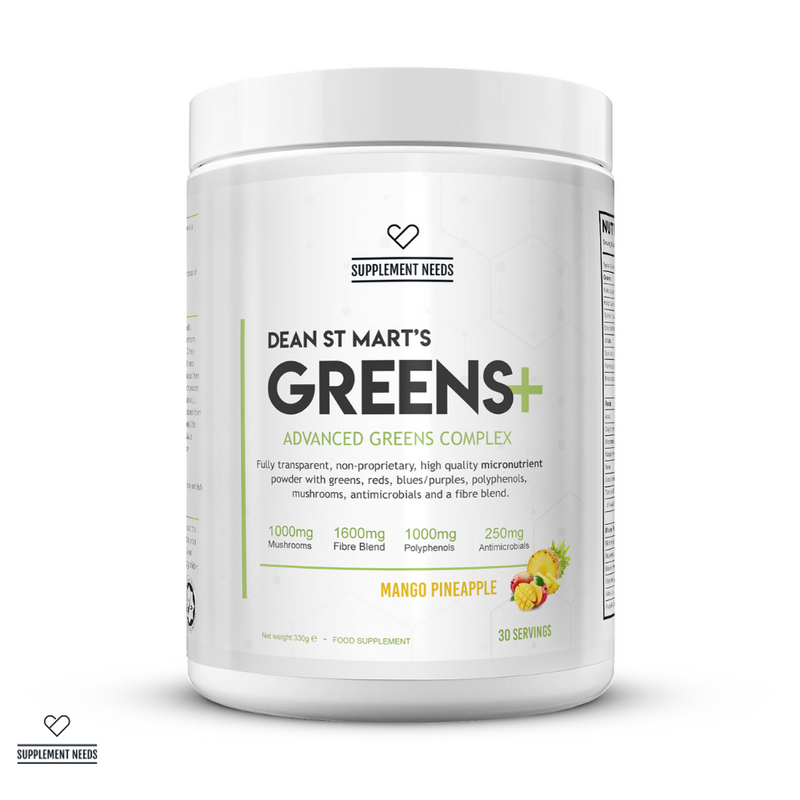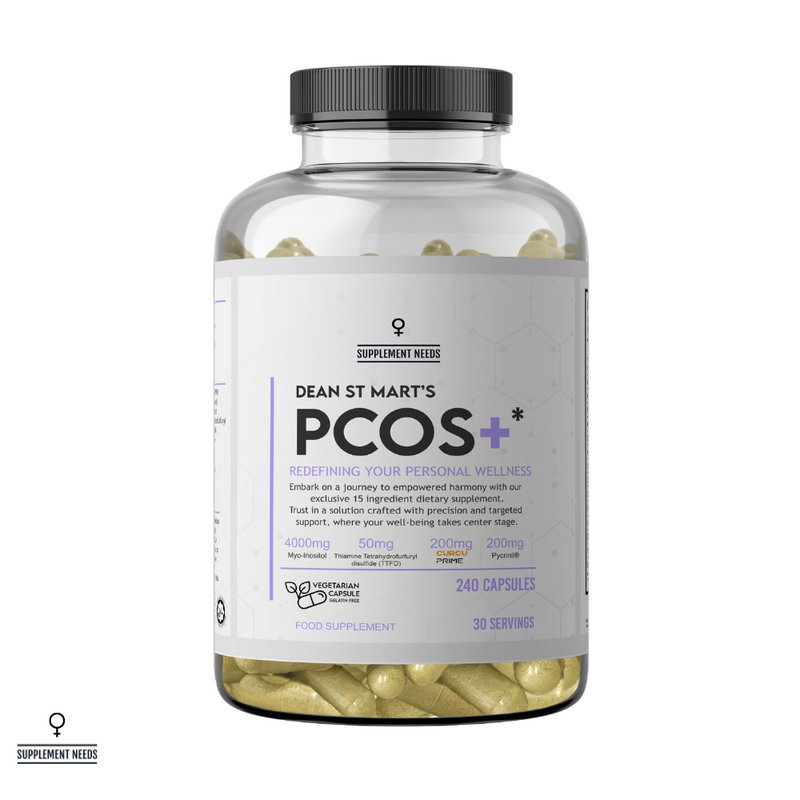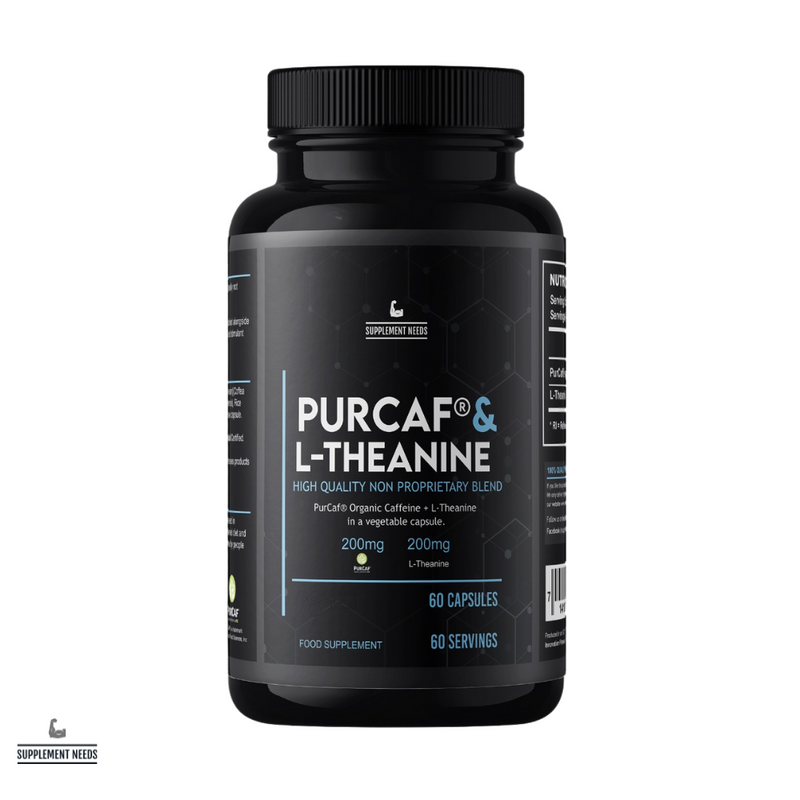You only have to turn on the TV or browse through YouTube to see adverts for greens powders. They’re seemingly everywhere, with plenty of people making claims as to what they can do for your health. But, what exactly are they? And, what do they do? Find out in this detailed guide from the team at Supplement Needs…
What are greens powders?
The explanation is very much in the name! Greens powders are dietary supplements that primarily consist of powdered vegetables and fruits.
However, as we’ll see later in this article, the better, premium greens powders will typically go beyond this basic composition and add further valuable ingredients, such as fungi, polyphenol-based ingredients (e.g. Green Tea Extract), antimicrobial herbs and additional sources of fibre.
Some greens powders will also contain prebiotics and or plant-based digestive enzymes. These ingredients are often added as a means of ensuring maximal digestion of the main dietary ingredients within the powder.
Given that greens powders are effectively a blend of powdered and micronised vegetables, fruits and other related foodstuffs, they are often flavoured. This is done to enhance palatability and mouthfeel - after all, you’re not going to want to drink something if it tastes less than optimal! (As you’ll see later, here at Supplement Needs we are quite particular about this).
You may often see greens powders referred to as containing ‘superfoods’; these are ingredients that contain high-levels of antioxidants, polyphenols and other compounds that can potentially have a positive effect on overall health and wellbeing.
When properly researched and formulated, premium greens powders can be a highly effective way to ensure your body receives the micronutrients it needs to sustain its essential metabolic functions.
The manufacturing process of greens powders typically sees the above vegetables, fruits and other ingredients dried out, before being ground into a powder. It’s in this powdered form that most consumers buy greens powders. In terms of actually ‘taking’ greens powders, the majority are mixed with water and then consumed orally as a drink or shake (that’s certainly how we recommend you take Supplement Needs Greens+!).
Note - although greens powders are - as their name suggests - green, the very best ones actually contain a ‘rainbow’ of fruits and vegetables. We’ll cover this aspect of green powders in more detail next.
What do greens powders contain?
Okay, so we’ve already alluded to the fact that greens powders contain a mix of fruits and vegetables. But, we appreciate that is a little vague. So, using our ‘rainbow’ analogy above, we’ll take you through the most common ingredients you tend to find in greens powders.
Greens
Yes, this is a rather obvious one, but as you’d expect one of the largest mix of ingredients you’ll tend to find in greens powders are green vegetables - more specifically:
-
Leafy greens - this encompasses vegetables such as spinach, kale, and parsley.
-
Marine greens - these are algae-based ingredients such as kelp, seaweed, and spirulina.
- Cruciferous greens - these are vegetables from the cruciferous family such as broccoli. (Note - kale is technically a cruciferous vegetable, but for the sake of this article we are grouping it under the term ‘leafy greens’ because of its physical characteristics).
So, why do greens make up the bulk of a green powder’s ingredients? The answer takes two parts; vitamin and mineral composition, and fibre.
As has been long known1, greens - especially those dark green leafy vegetables such as spinach, kale and parsley are rich in Vitamins A, C, E, and K. Cruciferous vegetables such as broccoli are rich in the all-important B Vitamins.
As we explored in our guide to multivitamins, the body requires a plethora of essential vitamins on a regular basis. Indeed, for many of these vitamins, the UK has set out a series of recommended daily intake guidelines.

Thus, a greens powder - such as Supplement Needs Greens+ - can help you meet your recommended daily intake of essential vitamins. To put it another way, green powders can be a great way of meeting your body’s micronutrient requirements - particularly if you don’t have large amounts of vegetables in your diet.
It’s also important to note that, in addition to many essential fat and water-soluble vitamins, greens are also a rich source of minerals. Common minerals found in greens include Iron, Magnesium, Potassium, and Calcium2.
Greens are also an excellent source of antioxidants - those all-important molecules that can fight oxidative stress within the body.
As we mentioned above, greens provide a great deal of fibre within greens powders. Why is this important? Because fibre can support digestive function, helping to retain water in the digestive tract and contributing to motility3. However, in their powdered form, greens don’t provide a huge amount of fibre - which is why you’ll find that the best greens powders contain additional sources of dietary fibre (for example, Supplement Needs Greens+ contains a massive 1600 mg of additional fibre per each 11 g serving).
A distinct component of ‘greens’ within a greens powder will also typically be algal ingredients - like kelp, seaweed, and spirulina. Aside from being rich in nutrients and antioxidants, algae - especially blue-green algae like spirulina, has been linked to a host of potential health benefits. Among these include the potential to prevent cardiovascular disease and non-alcoholic fatty liver disease4. Put it this way, spirulina and the like are very much ‘superfoods’ that you’ll want in your greens powder.
Fibre
Fibre is important - but too many green powders contain little-to-no fibre. This is a mistake. Why? Because fibre is intrinsic to a healthy digestion process.
Fibre (which is also sometimes referred to as ‘roughage’) is a term that is used for carbohydrates (as distinct from other carbohydrates like sugar and most starches) that are not digested in the small intestine. Instead, fibre passes through the small intestine intact into the large intestine5.
One of the main functions of fibre is to maintain intestinal motility - that is, it keeps everything moving within your gut and prevents constipation. Cereal fibres in particular absorb water, both adding bulk to your stools and making them softer - thus making them easier to pass.
Guide - want to know more about maintaining your gut health? Then read our guide to the best supplements for improving gut health and digestion.
So, any greens powder worth its salt should contain fibre (or, ideally, multiple sources of fibre). As we mentioned above, whilst greens themselves contain fibre, it’s present only in trace amounts in green powders, so you should look for additional sources of fibre in a powder. These include:
Rice bran
Rice bran refers to the outer brown layer of brown rice and is an excellent source of fibre. Rice bran also has the advantage of containing phenolic compounds (which serve as antioxidants)6. Whilst not being ‘certified’ gluten free, Rice bran has the benefit of being essentially free of gluten, making it acceptable for a broad range of diets.
Apple fibre powder
Apple fibre powder is produced from dried apple pomace and is a low-fat source of fibre. Apple fibre is also rich in antioxidants such as catechin which has been shown in studies to have a therapeutic effect upon inflammatory bowel conditions7.
Glucomman
Glucomman is a type of water-soluble polysaccharide that is derived from the cell walls of the Amorphophallus konjac K. Koch - a type of yam. With its excellent ability to absorb water it is ideal for maintaining satiety8, making you feel fuller for longer. It also reduces the absorption of fat9\. These characteristics make it an ideal ingredient for premium green powders.
Acacia fibre
Another form of fibre to look for in greens powders is acacia fibre. A soluble, non-viscous fibre, Acacia fibre is derived from the sap of the Acacia tree. Amongst its characteristics is its ability to act as a prebiotic, encouraging the growth of healthy bacteria in the gut. Furthermore, studies10 have suggested that Acacia fibre can increase satiety and lower peak blood glucose response.
As the premium greens powder on the market, Supplement Needs Greens+ contains all of these sources of fibre.
Reds, blues and purples
Greens powders may be green, but at their heart should sit an array of reds, blues and purples. And, by these colours, we’re referring to berries.
Berries that are typically found in greens powders include raspberries, gooseberries, Goji berries, blueberries, blackberries, elderberries and more.
And, why are berries added to greens powders? It again comes down to a mix of their vitamin and mineral content, fibre, and antioxidant content. In short, berries have an excellent nutritional profile - meaning they add great value to the overall composition of a greens powder.
Given that there are many different types of berry, which ones should you be looking for in a high-quality greens powder? Let’s take a look:
Blueberries
Aside from being a dense source of Vitamin K, Blueberries also contain Vitamin C and Manganese. They’re also host to a polyphenol called anthocyanins11. This is a powerful antioxidant which has been linked by studies to reductions in oxidative stress12.

A large observational study has also indicated that Blueberries could reduce rates of cognitive decline13. As you can see, Blueberries are ‘non-negotiable’ when it comes to greens powders!
Bilberries
Often confused with Blueberries, Bilberries are not often found in greens powders (but, you’ll find them in Supplement Needs Greens+!). However, with studies14 suggesting that Bilberries can reduce inflammation, they’ve become an ingredient you should definitely look for in a quality green powder. Other studies15 have suggested that Bilberries may help reduce LDL cholesterol (that’s the bad kind of cholesterol).
Raspberries
This tart, tongue tingling favourite doesn’t just taste good, but it’s packed with Vitamin C, Vitamin K, and Manganese.

Like other ‘reds’, Raspberries are packed with antioxidants. In this case, they contain polyphenols known as ellagitannins - like other types of antioxidant polyphenols, ellagitannins have been shown16 to combat oxidative stress.
Goji berries
Exhibiting a vibrant red hue, and a bitter, tart taste, Goji berries (also known as wolfberries) are bursting with vitamins, minerals and antioxidants. Further, their nutritional profile has been linked with some strong potential medicinal benefits. Among these potential benefits are slowing the signs of ageing, maintaining eye health and supporting organ health17.
Açai berries
A key ‘purple’ in the best greens powders are Açai berries. Grown on acaii palm trees, Açai berries have an extremely high antioxidant content, being regarded as one of the best sources of antioxidant polyphenols18. To give you some context as to how rich these berries are in antioxidants, consider that they contain 10 times more than blueberries (which are already rich in antioxidants).
Elderberries
Another key ‘purple’ to look out for in greens powders is Elderberry. This really is a wonder berry, being extremely high in vitamins, minerals, and antioxidants. Elderberries are also rich in flavanols, including the antioxidants quercetin, kaempferol, and isorhamnetin. They’re also packed with anthocyanins, which have been demonstrated to have potent anti-inflammatory effects19.
Whilst these are the reds, blues and purples that have the most robust evidence bases, there are a number of other berries to look for in a greens powder. These include; blackberries, Montmorency cherries, and gooseberries. Non-berry reds, blues and purples to look for include tomatoes, noni, purple cabbage and hibiscus.
You can probably guess what we’re going to say next. Yes, that’s right… Supplement Needs Greens+ contains all of these purples, reds and blues. Take a look at our completely transparent ingredient list to see the dosages at which Greens+ contains all these blues, reds and purples.
Polyphenols
Whilst many of the vegetables and fruits discussed so far contain polyphenols in their own right, there are certain ingredients that are added to greens powders specifically because they are so potent in polyphenols.
But, what exactly are polyphenols? And, what do they do?
Put simply, polyphenols are a category of compound found in plants. Note that the term polyphenol is an umbrella term that covers thousands of different types of polyphenols20 (in fact, it’s believed that there are over 8,000 unique types of polyphenol).
However, for taxonomic ease, scientists have grouped these polyphenols into a number of distinct classes:
-
Flavonoids - this class of polyphenol includes some that you’ll have read so far, such as catechins, anthocyanins, and quercetin. They are typically found in foods like apples and red cabbage. Flavonoids have been shown21 to possess a number of medicinal benefits, including antioxidant, anti-inflammatory, and antiviral properties.
-
Phenolic acids - examples of phenolic acids include chlorogenic acid and ferulic acid. Studies22 suggest phenolic acids could have several therapeutic applications.
- Polyphenolic amides - this group of polyphenols includes the likes of capsaicinoids, the spicy, pungent compounds that give hot chilli peppers their heat and ‘bite’. Studies23 have suggested capsaicinoids have a variety of anti-obesity and antioxidant properties.
Whilst these are traditionally considered to be the main ‘classes’ of polyphenols, there are many others with which you may be familiar (especially if you’re passionate about supplementation). Other common polyphenols include resveratrol (as found in red wine), ellagic acid (as found in many berries), and curcumin (as found in turmeric).
Despite their many differences, these polyphenols do have one thing in common. They all have strong antioxidant properties. As antioxidants, they are able to support your body to neutralise free radicals - the unstable atoms that can cause damage to healthy cells. Over a long-enough time, uncontrolled free radicals can cause severe oxidative stress, which in turn can result in the development of conditions like cancer and heart disease24.
Polyphenols also share another characteristic. They are widely considered to have strongly anti-inflammatory properties. And, as we’ve written elsewhere, chronic inflammation can be the root cause of many chronic illnesses (like inflammatory bowel disease).
So, now that you know what polyphenols are, and what they can potentially do to support your health and wellbeing, let’s take a look at the polyphenols you should look for in a greens powder:
Green Tea Extract
If there’s a foodstuff that’s closely associated in the public consciousness with polyphenols and antioxidant benefits it has to be Green Tea Extract. One only has to search the archives of the tabloid newspapers to find numerous articles extolling the benefits of Green Tea.

Green tea is one of the world’s most widely-drunk teas and is sourced from the leaves of the Camellia sinensis. In addition to being popular, it’s also one of the most intensely studied substances in the world. In particular, Green Tea Extract’s polyphenols - most notably epigallocatechin gallate (EGCG) has been a focus of academic attention.
A wealth of studies2526 have shown that Green Tea Extract increases the body’s antioxidant capacity - in other words, it increases the volume of antioxidants that your body is able to produce and maintain. In turn, your body is better able to combat oxidative stress, inflammation, and sustain its immune system.
The antioxidants in Green Tea Extract have been linked to several other potential health benefits, including:
-
Reduction of inflammation in the circulatory system and consequently a lowering of blood pressure27.
-
Protection from cognitive decline and enhancement of memory28.
-
Supporting weight loss via improved regulation of the hormones responsible for thermogenesis29.
- Possibly benefiting exercise performance and recovery by reducing cellular damage from exercise-induced oxidative stress30.
It’s clear that Green Tea Extract is a highly-beneficial ingredient for inclusion in greens powders. That’s why here at Supplement Needs our renowned product formulator Dr Dean St Mart PhD has created Greens+ to contain 250 mg of Green Tea Extract per 11 g serving.
Grape Seed Extract
Produced from the seeds of grapes, Grape Seed Extract is another greens powder ingredient that is almost literally bursting with polyphenols. Amongst the polyphenols to be found in Grape Seed Extract are flavonoids, anthocyanins, and phenolic acids. Grape Seed Extract is also one of the richest sources of proanthocyanidins - tannins which have powerful anti-inflammatory qualities.

Like other polyphenol-rich substances, Grape Seed Extract has been fairly intensively studied and - as a result - has been linked to a number of potential health benefits. These potential benefits include:
-
The ability to potentially reduce blood pressure. A review of 16 studies found that daily supplementation of Grape Seed Extract was linked with a significant drop in systolic and diastolic blood pressure31.
-
Improved blood flow and consequently reduced risk of edemas32.
-
Potentially supporting cognitive function and offsetting cognitive decline33.
- May have a protective effect upon the liver, reducing inflammation and protecting against free radical damage during toxin exposure34.
Given these qualities, and the potential health benefits associated with its supplementation, we have included Grape Seed Extract within Supplement Needs Greens+. Our extract is derived directly from the seeds of Vitis vinifera and is present in the product at 250 mg per 11 g serving.
Other important polyphenols present within Greens+ include pomegranate powder and beetroot powder. Both of these ingredients have been linked to significant health benefits, with beetroot in particular being characterised as ‘a functional food with huge health benefits’35. Pomegranate, too - being low in fat, and high in fibre, vitamins and minerals has been described as having ‘potent health effects’36.
Fungi
A much rarer ingredient to find in greens powders is fungi. The fruiting bodies (a.k.a. mushrooms) of fungi such as Reishi, Chaga, Shiitake are, however, increasingly being included in the very best greens powders.
Why? Because, not only do these mushrooms offer a mix of vitamins, minerals and antioxidants - but in some instances they possess nootropic-like properties. This means they are able to help regulate neurotransmitters and potentially induce a feeling of calm, focus and concentration.
Let’s take a look at some specific mushrooms and why they should be included in the greens powder you buy:
Reishi
The Reishi mushroom - which has the binomial name Ganoderma lucidum - is a mushroom that can be found in the hot, humid corners of Asia.
Lingzhi, as it is also known, has long been known to mankind to have potentially therapeutic benefits. In fact, historical evidence traces its use back over 2,000 years - primarily for its apparent healing properties37.
Today, however, Reishi is being studied for its potential to offer a lot more benefits. These potential benefits? They’re listed below:
-
Studies38 have linked regular supplementation of Reishi mushrooms with a potential boost of the immune system. Other studies39 have found that Reishi may alter the inflammation pathways of white blood cells.
-
May reduce depression and fatigue - this is certainly one of the most talked-about aspects of Reishi, with many people referring to it as a ‘functional mushroom’ as a result. One study40 found that after 8 weeks of Reishi supplementation, fatigue was reduced and wellbeing improved amongst the study’s participants.
- Although research is limited, Reishi may have potential anti-cancer properties. A number4142 of test-tube studies have indicated that Reishi may be able to ‘kill’ cancerous cells.
Naturally, given its remarkable properties, Reishi has been included in Supplement Needs Greens+. Each 11 g serving contains an impressive 333 mg of Reishi mushroom powder extract.
Chaga
An antioxidant-loaded mushroom, Chaga - Inonotus obliquus - is perhaps best known as a parasitic fungus that ‘eats’ trees. However, it’s precisely this behaviour that means Chaga is packed with antioxidants and other useful compounds and nutrients.

Like Reishi, Chaga - which also goes by the names black mass, clinker polypore, birch canker polypore, and cinder conk - has been used for centuries, with use being particularly concentrated in Northern Europe and Eurasia.
In its powdered form, it’s increasingly being included in the highest-quality greens powders. That’s largely due to the increasing body of scientific literature which is linking Chaga supplementation with a number of beneficial health outcomes. These potential benefits include:
-
Potentially enhanced cognitive performance and concentration. Although the evidence is still limited at present, one promising study found that the supplementation of methanolic extract of Chaga over seven days ‘significantly improved learning and memory as measured by PAT (Passive Avoidance Task) and MWM (Morris Water Maze) paradigms’43.
- Potential to boost the immune system. Studies44 have indicated that Chaga supplementation can promote the formation of beneficial cytokines, the specialist proteins that regulate the immune system.
Another beneficial mushroom which is typically included in premium greens powders is Shiitake. As you’d expect, Supplement Needs Greens+ includes Shiitake and both Chaga and Reishi as described above.
Antimicrobials
If you’re going to be taking a greens supplement every day, you don’t just want it to be topping up your essential vitamins, adding minerals and boosting your body with antioxidants.
No, you also want it to include a set of well-researched and carefully formulated antimicrobials ingredients.
What are antimicrobials? Academics define antimicrobials as ‘therapeutic substances used to prevent or treat infections’45. Whilst antimicrobials can include synthetic substances (such as disinfectants), our focus here is on biosourced antimicrobials - that is, antimicrobials that are derived from plants or herbs.
Like the other ingredients detailed in this guide, the antimicrobials that are typically included in greens supplements do have other characteristics, such as containing antioxidants and vitamins and minerals - but they are added primarily for their antimicrobial therapeutic potential.
Let’s take a look at some of the most common antimicrobials found in greens supplements:
Rosemary
Rosemary - Salvia rosmarinus - is a shrub with a long and storied history of use for health protective effects46.
Its roots (if you’ll excuse the pun) stretch back to Ayurvedic medicine where the shrub would be used for a variety of purposes - especially as a prophylactic against disease. Furthermore, Rosemary was considered ‘sacred’ by the ancient Egyptians, Romans, and Greeks.

That it has been valued as an important healing plant for so long is testament to its powerful properties - properties which are increasingly being elucidated on by modern science.
We’ll now turn to the benefits of Rosemary as evidence by modern academic studies:
-
May protect your body from the oxidative damage that can lead to chronic diseases such as cancer, heart disease, and diabetes mellitus. This is largely down to the high levels of antioxidant compounds found in Rosemary, including rosmarinic acid and carnosic acid47.
- As we have seen, Rosemary has antimicrobial properties - and can potentially help fight infections. Studies48 have increasingly pointed to Rosemary’s ability to act as an antimicrobial agent.
We have formulated Supplement Needs Greens+ to include this powerful antimicrobial agent, with each 11 g serving containing 62.5 mg of Rosemary. Note that - unlike many other supplement brands - we source our Rosemary directly from the leaf where the active compounds are most densely concentrated.
Oregano
A member of the mint family Lamiaceae, Oregano (Origanum vulgare) is yet another ingredient that’s found in the very best greens supplements.
Whilst it contains plenty of antioxidants and other useful micronutrients, it’s primarily for its antimicrobial properties that it has been added to Supplement Needs Greens+ (at 62.5 mg per 11 g serving).
So, how effective is it as an antimicrobial agent? Studies seem to suggest it’s very effective.
-
Oregano has been shown in multiple studies to actively fight bacteria. One notable study49 found that Oregano was able to successfully block the growth of Escherichia coli and Pseudomonas aeruginosa - two types of bacteria that are commonly associated with the development of infections. Another study50 found that Oregano was effective at inhibiting the growth of 23 separate species of bacteria. If a greens powder claims to contain antimicrobial ingredients, it’s got to include Oregano!
-
Oregano may also help to ward off viral infections. That’s potentially due to the fact that Oregano contains carvacrol and thymol. These two compounds have been linked in studies51 to the inactivation of viruses such as norovirus. A further study52 found that thymol and carvacrol were able to ‘deactivate’ 90% of the herpes simplex virus within an hour of application.
- Can potentially reduce inflammation. As we’ve seen, inflammation can result in a number of chronic conditions, but studies are showing that Oregano (or at least one of its compounds, carvacrol) can reduce inflammation. In one animal study53, carvacrol reduced swelling of the paws of mice by up to 57%.
Whilst those are two of the antimicrobials with some of the most robust evidence bases, there are other antimicrobials that you’ll typically find in greens powders. These other antimicrobials include Basil and Garlic.
Take Basil, for example. In addition to being filled with Vitamin A, K, and the minerals Calcium, Iron and Manganese, Basil has been shown to have significant antimicrobial properties. So much so, in fact, that studies54 are looking at the many potential applications of Basil as an antibacterial agent. Potential applications of Basil include as a way to inhibit the growth of bacteria that cause dental decay and caries55. One particularly novel potential application56 includes the use of Basil to make food packaging more resistant to pathogenic microbes!
As for Garlic, this has long-been associated with antimicrobial properties. This is mainly down to the many compounds Garlic contains - first amongst which is allicin - a very powerful antimicrobial agent57.
However, allicin isn’t garlic’s only magic trick. It also contains a series of organosulphur compounds that have strong antibacterial properties. As per one recent study58 on these compounds, ‘The reactive organosulfur compounds form disulphide bonds with free sulfhydryl groups of enzymes and compromise the integrity of the bacterial membrane’.
When is the best time to take greens powder?
Now that we’ve looked at the ingredients that should typically be included within a greens powder, let’s take a look at the practical application of greens supplements.
In other words? When is the best time to take greens powders?
The answer is very much down to personal preference - however, we find that the majority of people take their greens powder in the morning, generally around 30 minutes before they eat any other foodstuffs. By leaving a bit of time before you have any other food, you’ll be giving your body time to start digesting the greens.
It’s also worth noting that given that certain greens powders contain ingredients such as Green Tea Extract and functional mushrooms, it’s advisable not to take these types of greens powders in the evening; you risk potentially disturbing your sleep.
What are the potential health benefits of greens powders?
At this point, you’re probably thinking about clicking that ‘buy now’ button. Is it really worth it? Well, naturally, we’re going to say yes. However, don’t just take our word for it.
There is an increasing body of scientific literature that suggests that many of the ingredients and compounds within greens powders may have a number of potential health benefits.
Let’s explore.
Antioxidant
Arguably, the most significant potential impact of supplementing your diet with a greens supplement every day is in the antioxidant boost that can be gained.
As we’ve seen throughout this guide, numerous of the ingredients contained within greens powders are rich in antioxidants. These antioxidants can take many forms, be they flavonoids or phenolic acids. However, as studies have demonstrated59, a diet rich in antioxidants can potentially reduce the latter occurrence of chronic diseases such as heart disease and diabetes mellitus.
This is due to antioxidant’s ability to ‘scavenge’ the free radicals that cause oxidative stress and damage to healthy cells.
If you want to ensure you’re topping up your body with antioxidants on a regular basis, a greens powder is one of the best ways of doing so.
Anti-inflammatory
Aside from antioxidants, the best greens powders are packed with compounds that have strong anti-inflammatory properties. Be they tannins, anthocyanins, catechins or any other compound with anti-inflammatory characteristics, the best greens powders ensure your body is supplied with micronutrients that can tackle and/or prevent chronic inflammation.
We’ve already seen the role that inflammation plays in the aetiology of disease. Put another way, inflammation left untackled can - over time - result in the development of any number of chronic diseases including cardiovascular disease, cancer, diabetes mellitus, chronic kidney disease and nonalcoholic fatty liver disease60.
Thus, if you want to ensure your body has the micronutrients it needs to potentially positively impact inflammation, you may want to consider adding a greens supplement to your diet.
Nutrient uptake
There’s also the simple fact that many of us don’t eat the recommended amount of fruit and vegetables each day.
The National Health Service recommends that healthy adults in the UK eat five 80g portions of fruit and veg every day61. However, according to data from NHS England only 24% to 26% of men and 27% to 32% of women actually hit this recommendation and consume five portions of fruit and vegetables per day62.
Put simply, many of us aren’t eating enough fruit and vegetables. And, you can perhaps understand why. Many of us lead hectic, busy lives, and it’s often easier to plump for less-than-healthy snacks when we’re feeling peckish.
However, greens powders offer an excellent way of getting those all important fruit and veg into your diet - and, in the form of an easy to consume drink. With an appropriate jug, you can even consume it on the go!
What to look for when buying a greens powder
As we stated at the outset of this guide, you only have to browse YouTube or scroll through social media to see adverts for greens powders.
They’re literally everywhere; but, as our adage here at Supplement Needs goes - “Not all supplements are created equal”.
So, if you want to ensure you get value for your money and buy only the best greens supplement for your needs - look for the following things in a greens powder:
Radical transparency
All too often, greedy supplements brands will skimp on the ingredients in their greens powders. They’ll use cheap, generic ingredients. They’ll use lots of ‘filler’ ingredients to bulk out their powders.
That’s why you should always avoid cheap supplements.
On the face of it, cheap supplements may make you feel like you’re saving money, when the reality is, you’re wasting it!
Thus, the best greens powders are completely transparent about their ingredients. Greens powders like Supplement Needs Greens+:
- Provide a detailed list of all the ingredients.
- They detail exactly what form those ingredients take (for example, providing the binomial name of plant-based ingredients).
- They state the exact dosage at which those ingredients are present (per serving).
Here at Supplement Needs we abide by this radical transparency - providing you with a crystal clear view of what our greens supplements contain. There are almost no other supplement brands that do this.
But, if you’re serious about your health, you need to be serious about the contents of your supplements.
Active ingredients
As we stated above, it often proves too tempting for some profit-hungry supplement brands to ‘fill out’ their powders with non-active ingredients. It gives the impression that consumers are getting more for their money, when in fact the reverse is true!
This goes back to our point above that you should always check that the greens powder you buy has a detailed, transparent list of its ingredients.
Here at Supplement Needs our ultra-popular Greens+ contains an incredible 86% active ingredients at 9.484g per 11 g serving. That’s incredible (especially when you compare it to many of the ‘big name’ greens brands out there).
Developed by experts
All too often, supplement brands are ‘white label’ operations, where they simply buy pre-manufactured powders and whack their own label on it. There’s no real expertise and thought behind their products.
If you want to ensure you’re buying the very best greens powder - and truly getting your money’s worth - you should buy one that has been researched and formulated by experts.
Like Greens+ - which has been developed by Dr. Dean St Mart PhD. Dr Dean is a renowned product formulator and holds a double first class honours degree in chemistry and pharmaceutical chemistry from the National University of Maynooth (where he finished top of the university). He also holds a PhD in synthetic organic chemistry and fluorescence spectroscopy.
When you buy a supplement from Supplement Needs, you’re effectively buying a product that has had years of expertise poured into it.
Safe and quality manufacture
Do you know where your supplement has come from? There are factories all over the world pumping out supplements (especially supplements like greens powders). And, as you’d expect, some of those factories are better than others.
You should always check the provenance of a greens powder before buying it.
Here at Supplement Needs, Greens+ (as well as all of our other products) is manufactured right here in the UK to Good Manufacturing Practices (GMP) and ISO guidelines.
This ensures our products are safe, quality and consistent.
Go green with Supplement Needs Greens+

If you’re looking to add a greens supplement to your diet, then there’s no better way to do so than with Supplement Needs Greens+.
Packed with all the active ingredients you should look for in a greens supplement Greens+ is one of the best value greens powders on the market - at only £1.16 per serving (that’s less than a can of Monster).
Not only does it contain a complete ‘rainbow’ of ingredients, but it has also been formulated in two delicious flavours; Mango Pineapple, and Cherry. This means it not only provides the micronutrients that will support bodily wellbeing, but it’s a treat to drink, too.
Greens+ has also been designed to be ‘stacked’ alongside Electrolyte+ allowing you to rehydrate and fill up on essential micronutrients simultaneously. For the ultimate experience, try stacking the Mango Pineapple Greens+ alongside Electrolyte+ Pineapple.
With free orders over £19.99, worldwide delivery available, and same day dispatch on orders placed before 3pm, Monday-Friday, what are you waiting for?
Go green with Supplement Needs Greens+ today.
Shop greens powders at Supplement Needs now
For more insights and information about supplements, read the Supplement Needs blog…
Nootropics: Supplements That Can Improve Your Productivity? | How to Boost Your Immune System | Is It Possible to Buy Complete Plant Protein Powders?
Disclaimer
The information on this website should not be used as a substitute for professional medical advice or care. If you have questions about your health, please contact your doctor.
References
1. Yan L. Dark Green Leafy Vegetables. USDA Agricultural Research Service [online]. Available at: https://www.ars.usda.gov/plains-area/gfnd/gfhnrc/docs/news-articles/2013/dark-green-leafy-vegetables/# (Accessed on 20th August 2024).
2. Yan L. Dark Green Leafy Vegetables. USDA Agricultural Research Service [online]. Available at: https://www.ars.usda.gov/plains-area/gfnd/gfhnrc/docs/news-articles/2013/dark-green-leafy-vegetables/# (Accessed on 20th August 2024).
3. Barber, T. Kabisch S, Pfeiffer A, Weickert M. The Health Benefits of Dietary Fibre [online]. Available at: https://www.ncbi.nlm.nih.gov/pmc/articles/PMC7589116/ (Accessed on 20th August 2024).
4. Ku C, Yang Y, Park Y, Lee J. Health Benefits of Blue-Green Algae: Prevention of Cardiovascular Disease and Nonalcoholic Fatty Liver Disease [online]. Available at: https://www.ncbi.nlm.nih.gov/pmc/articles/PMC3576896/ (Accessed on 20th August 2024).
5. Fibre. British Nutrition Foundation [online]. Available at: https://www.nutrition.org.uk/nutritional-information/fibre/ (Accessed on 20th August 2024).
6. Zhuang X, Yin T, Han W, Zhang X. Chapter 10 - Nutritional Ingredients and Active Compositions of Defatted Rice Bran, in Rice Bran and Rice Bran Oil: Chemistry, Processing and Utilisation [online]. Available at: https://www.sciencedirect.com/science/article/abs/pii/B978012812828200010X (Accessed on 20th August 2024).
7. Fan F, Sang L, Jiang M. Catechins and Their Therapeutic Benefits to Inflammatory Bowel Disease [online]. Available at: https://www.ncbi.nlm.nih.gov/pmc/articles/PMC6155401/ (Accessed on 20th August 2024).
8. Howarth N, Saltzman E, Roberts S. Dietary fibre and weight regulation [online]. Available at: https://pubmed.ncbi.nlm.nih.gov/11396693/ (Accessed on 20th August 2024).
9. Baer D, Rumpler W, Miles C, Fahey Jr G. Dietary fibre decreases the metabolisable energy content and nutrient digestibility of mixed diets fed to humans [online]. Available at: https://pubmed.ncbi.nlm.nih.gov/9109608/ (Accessed on 20th August 2024).
10. Larson R, Nelson C, Korczak R, Willis H, Erickson J, Wang Q, Slavin J. Acacia Gum Is Well Tolerated While Increasing Satiety and Lowering Peak Blood Glucose Response in Healthy Human Subjects [online]. Available at: https://www.ncbi.nlm.nih.gov/pmc/articles/PMC7918852/ (Accessed on 20th August 2024).
11. Huang W, Zhang H, Liu W, Li C. Survey of antioxidant capacity and phenolic composition of blueberry, blackberry, and strawberry in Nanjing [online]. Available at: https://www.ncbi.nlm.nih.gov/pmc/articles/PMC3274736/ (Accessed on 20th August 2024).
12. Kay C, Holub B. The effect of wild blueberry (Vaccinium angustifolium) consumption on postprandial serum antioxidant status in human subjects [online]. Available at: https://pubmed.ncbi.nlm.nih.gov/12323088/ (Accessed on 20th August 2024).
13. Devore E, Kang J, Breteler M, Grodstein F. Dietary intakes of berries and flavonoids in relation to cognitive decline [online]. Available at: https://pubmed.ncbi.nlm.nih.gov/22535616/ (Accessed on 20th August 2024).
14. Kolehmainen M, Mykkänen O, Kirjavainen P, et. al. Bilberries reduce low-grade inflammation in individuals with features of metabolic syndrome [online]. Available at: https://pubmed.ncbi.nlm.nih.gov/22961907/ (Accessed on 20th August 2023).
15. Zhu Y, Miao Y, Meng Z, Zhong Y. Effects of Vaccinium Berries on Serum Lipids: A Meta-Analysis of Randomised Controlled Trials [online]. Available at: https://pubmed.ncbi.nlm.nih.gov/26345230/ (Accessed on 20th August 2024).
16. Burton-Freeman B, Sandhu A, Edirisinghe I. Red Raspberries and Their Bioactive Polyphenols: Cardiometabolic and Neuronal Health Links [online]. Available at: https://www.ncbi.nlm.nih.gov/pmc/articles/PMC4717884/ (Accessed on 20th August 2024).
17. Ma Z, Zhang H, Teh S, et. al. Goji Berries as a Potential Natural Antioxidant Medicine: An Insight into Their Molecular Mechanisms of Action [online]. Available at: https://www.ncbi.nlm.nih.gov/pmc/articles/PMC6343173/ (Accessed on 20th August 2024).
18. Pozo-Insfran D, Brenes C, Talcott S. Phytochemical composition and pigment stability of Acai (Euterpe oleracea Mart.) [online]. Available at: https://pubmed.ncbi.nlm.nih.gov/15030208/ (Accessed on 20th August 2024).
19. Sidor A, Gramza-Michalowska A. Advanced research on the antioxidant and health benefits of elderberry (Sambucus nigra) in food - a review [online]. Available at: https://www.sciencedirect.com/science/article/pii/S1756464614002400 (Accessed on 20th August 2024).
20. Tsao R. Chemistry and Biochemistry of Dietary Polyphenols [online]. Available at: https://www.ncbi.nlm.nih.gov/pmc/articles/PMC3257627/ (Accessed on 20th August 2024).
21. Ullah A, Munir S, Badshah s, et. al. Important Flavonoids and Their Role as a Therapeutic Agent [online]. Available at: https://www.ncbi.nlm.nih.gov/pmc/articles/PMC7697716/# (Accessed on 20th August 2024).
22. Kumar N, Goel N. Phenolic acids: Natural versatile molecules with promising therapeutic applications [online]. Available at: https://www.ncbi.nlm.nih.gov/pmc/articles/PMC6734135/ (Accessed on 20th August 2024).
23. Azlan A, Sultana S, Huei C, Razman M. Antioxidant, Anti-Obesity, Nutritional and Other Beneficial Effects of Different Chili Pepper: A Review [online]. Available at: https://www.ncbi.nlm.nih.gov/pmc/articles/PMC8839052/ (Accessed on 20th August 2024).
24. Pham-Huy L, He H, Pham-Huy C. Free Radicals, Antioxidants in Disease and Health [online]. Available at: https://www.ncbi.nlm.nih.gov/pmc/articles/PMC3614697/ (Accessed on 20th August 2024).
25. Lowe G, Gana K, Rahman K. Dietary supplementation with green tea extract promotes enhanced human leukocyte activity [online]. Available at: https://pubmed.ncbi.nlm.nih.gov/26259232/ (Accessed on 20th August 2024).
26. Basu A, Betts N, Mulugeta A, Tong C, Newman E, Lyons T. Green tea supplementation increases glutathione and plasma antioxidant capacity in adults with the metabolic syndrome [online]. Available at: https://pubmed.ncbi.nlm.nih.gov/23507223/ (Accessed on 20th August 2024).
27. Bogdanski P, Suliburska J, Szulinska M, Stepien M, Pupek-Musialik D, Jablecka A. Green tea extract reduces blood pressure, inflammatory biomarkers, and oxidative stress and improves parameters associated with insulin resistance in obese, hypertensive patients [online]. Available at: https://pubmed.ncbi.nlm.nih.gov/22749178/ (Accessed on 20th August 2024).
28. Fukutomi R, Ohishi T, Koyama Y, Pervin M, Nakamura Y, Isemura M. Beneficial Effects of Epigallocatechin-3- O-Gallate, Chlorogenic Acid, Resveratrol, and Curcumin on Neurodegenerative Diseases [online]. Available at: https://pubmed.ncbi.nlm.nih.gov/33466849/ (Accessed on 20th August 2024).
29. Bérubé-Parent S, Pelletier C, Doré J, Tremblay A. Effects of encapsulated green tea and Guarana extracts containing a mixture of epigallocatechin-3- gallate and caffeine on 24 h energy expenditure and fat oxidation in men [online]. Available at: https://pubmed.ncbi.nlm.nih.gov/16176615/ (Accessed on 20th August 2024).
30. Machado Á, Silva W, Souza M, Carpes F. Green Tea Extract Preserves Neuromuscular Activation and Muscle Damage Markers in Athletes Under Cumulative Fatigue [online]. Available at: https://pubmed.ncbi.nlm.nih.gov/30174618/ (Accessed on 20th August 2024).
31. Zhang H, Liu S, Li L, Liu S, Liu S, Mi J, Tian G. The impact of grape seed extract treatment on blood pressure changes [online]. Available at: https://www.ncbi.nlm.nih.gov/pmc/articles/PMC5370781/ (Accessed on 20th August 2024).
32. Sano A, Tokutake S, Seo A. Proanthocyanidin-rich grape seed extract reduces leg swelling in healthy women during prolonged sitting [online]. Available at: https://pubmed.ncbi.nlm.nih.gov/22752876/ (Accessed on 20th August 2024).
33. Calapai G, Bonina F, Bonina A, Rizza L, Mannucci C, Arcoraci V, Laganà G, Alibrandi A, Pollicino C, Inferrera S, Alecci U. A Randomised, Double-Blinded, Clinical Trial on Effects of a Vitis vinifera Extract on Cognitive Function in Healthy Older Adults [online]. Available at: https://pubmed.ncbi.nlm.nih.gov/29163162/ (Accessed on 20th August 2024).
34. Khosbaten M, Aliasgarzadeh A, Masnadi K, Farhang S, Tarzamani M, Babaei H, Kiani J, Zaare M, Najafipoor F. Grape seed extract to improve liver function in patients with nonalcoholic fatty liver change [online]. Available at: https://pubmed.ncbi.nlm.nih.gov/20616415/ (Accessed on 20th August 2024).
35. Chen L, Zhu Y, Hu Z, Wu S, Jin C. Beetroot as a functional food with huge health benefits: Antioxidant, antitumor, physical function, and chronic metabolomics activity [online]. Available at: https://www.ncbi.nlm.nih.gov/pmc/articles/PMC8565237/ (Accessed on 20th August 2024).
36. Zarfeshany A, Asgary S, Javanmard S. Potent health effects of pomegranate [online]. Available at: https://www.ncbi.nlm.nih.gov/pmc/articles/PMC4007340/ (Accessed on 20th August 2024).
37. Kafarski P, Perez-Alvarez J. Nutritional Profile and Health Benefits of Ganoderma lucidum “Lingzhi, Reishi, or Mannentake” as Functional Foods: Current Scenario and Future Perspectives [online]. Available at: https://www.ncbi.nlm.nih.gov/pmc/articles/PMC8998036/ (Accessed on 20th August 2024).
38. Wang X, Lin Z. Immunomodulating Effect of Ganoderma (Lingzhi) and Possible Mechanism [online]. Available at: https://pubmed.ncbi.nlm.nih.gov/31777013/ (Accessed on 20th August 2024).
39. Cheng C, Chen A. The effects of two different ganoderma species (Lingzhi) on gene expression in human monocytic THP-1 cells [online]. Available at: https://pubmed.ncbi.nlm.nih.gov/20574926/ (Accessed on 20th August 2024).
40. Tang W, Gao Y, Chen G, Gao H, Dai X, Ye J, Chan E, Huang M, Zhou S. A randomised, double-blind and placebo-controlled study of Ganoderma lucidum polysaccharide extract in neurasthenia [online]. Available at: https://pubmed.ncbi.nlm.nih.gov/15857210/ (Accessed on 20th August 2024).
41. Jin H, Song C, Zhao Z, Zhou G. Ganoderma Lucidum Polysaccharide, an Extract from Ganoderma Lucidum, Exerts Suppressive Effect on Cervical Cancer Cell Malignancy through Mitigating Epithelial-Mesenchymal and JAK/STAT5 Signalling Pathway [online]. Available at: https://pubmed.ncbi.nlm.nih.gov/31995806/ (Accessed on 20th August 2024).
42. Jiao C, Chen W, Tan X, Liang H, Li J, Yun H, He C, Chen J, Ma X, Xie Y, Yang B. Ganoderma lucidum spore oil induces apoptosis of breast cancer cells in vitro and in vivo by activating caspase-3 and caspase-9 [online]. Available at: https://pubmed.ncbi.nlm.nih.gov/31586690/ (Accessed on 20th August 2024).
43. Giridharan V, Thandavarayan R, Konishi T. Amelioration of scopolamine induced cognitive dysfunction and oxidative stress by Inonotus obliquus - a medicinal mushroom [online]. Available at: https://pubmed.ncbi.nlm.nih.gov/21779570/ (Accessed on 20th August 2024).
44. Kim Y. Immunomodulatory Activity of the Water Extract from Medicinal Mushroom Inonotus obliquus [online]. Available at: https://www.ncbi.nlm.nih.gov/pmc/articles/PMC3774877/ (Accessed on 20th August 2024).
45. Martino P. Antimicrobial agents and microbial ecology [online]. Available at: https://www.ncbi.nlm.nih.gov/pmc/articles/PMC8995183/ (Accessed on 20th August 2024).
46. Rafael de Oliveira J, Camargo S, Dias de Oliveria L. Rosmarinus officinalis L. (rosemary) as therapeutic and prophylactic agent [online]. Available at: https://www.ncbi.nlm.nih.gov/pmc/articles/PMC6325740/ (Accessed on 20th August 2024).
47. Rašković A, Milanović I, Pavlović N, Ćebović T, Vukmirović S, Mikov M. Antioxidant activity of rosemary (Rosmarinus officinalis L.) essential oil and its hepatoprotective potential [online]. Available at: https://www.ncbi.nlm.nih.gov/pmc/articles/PMC4227022/ (Accessed on 20th August 2024).
48. Alagawany M, El-Hack M, Farag M, et.al. Rosmarinic acid: modes of action, medicinal values and health benefits [online]. Available at: https://pubmed.ncbi.nlm.nih.gov/29110743/ (Accessed on 20th August 2024).
49. Sienkiewicz M, Wasiela M, Głowacka A. The antibacterial activity of oregano essential oil (Origanum heracleoticum L.) against clinical strains of Escherichia coli and Pseudomonas aeruginosa [online]. Available at: https://pubmed.ncbi.nlm.nih.gov/23484421/ (Accessed on 20th August 2024).
50. Saeed S, Tariq P. Antibacterial activity of oregano (Origanum vulgare Linn.) against gram positive bacteria [online]. Available at: https://pubmed.ncbi.nlm.nih.gov/19783523/ (Accessed on 20th August 2024).
51. Gilling D, Kitajima M, Torrey J, Bright K. Antiviral efficacy and mechanisms of action of oregano essential oil and its primary component carvacrol against murine norovirus [online]. Available at: https://pubmed.ncbi.nlm.nih.gov/24779581/ (Accessed on 20th August 2024).
52. Lai W, Chuang H, Lee M, Wei C, Lin C, Tsai Y. Inhibition of herpes simplex virus type 1 by thymol-related monoterpenoids [online]. Available at: https://pubmed.ncbi.nlm.nih.gov/22890541/ (Accessed on 20th August 2024).
53. Silva F, Guimarães A, Silva E, et. al. Anti-inflammatory and anti-ulcer activities of carvacrol, a monoterpene present in the essential oil of oregano [online]. Available at: https://pubmed.ncbi.nlm.nih.gov/22892022/ (Accessed on 20th August 2024).
54. Sienkiewicz M, Lysakowska M, Pastuszka M, Bienias W, Kowalczyk E. The potential of use basil and rosemary essential oils as effective antibacterial agents [online]. Available at: https://pubmed.ncbi.nlm.nih.gov/23921795/ (Accessed on 20th August 2024).
55. Wiwattanarattanabut K, Choonharuangdej S, Srithavaj T. In Vitro Anti-Cariogenic Plaque Effects of Essential Oils Extracted from Culinary Herbs [online]. Available at: https://pubmed.ncbi.nlm.nih.gov/29207708/ (Accessed on 20th August 2024).
56. Suppakul P, Miltz J, Sonneveld K, Bigger S. Antimicrobial properties of basil and its possible application in food packaging [online]. Available at: https://pubmed.ncbi.nlm.nih.gov/12744643/ (Accessed on 20th August 2024).
57. Reiter J, Hübbers A, Albrecht F, Leichert L, Slusarenko A. Allicin, a natural antimicrobial defence substance from garlic, inhibits DNA gyrase activity in bacteria [online]. Available at: https://www.sciencedirect.com/science/article/pii/S1438422119301997# (Accessed on 20th August 2024).
58. Bhatwalkar S, Mondal R, Krishna S, Adam J, Govender P, Anupam R. Antibacterial Properties of Organosulfur Compounds of Garlic (Allium sativum) [online]. Available at: https://www.ncbi.nlm.nih.gov/pmc/articles/PMC8362743/ (Accessed on 20th August 2024).
59. Lobo V, Patil A, Phatak A, Chandra N. Free radicals, antioxidants and functional foods: Impact on human health [online]. Available at: https://www.ncbi.nlm.nih.gov/pmc/articles/PMC3249911/ (Accessed on 20th August 2024).
60. Furman D, Campisi J, Verdin E, et.al. Chronic inflammation in the etiology of disease across the life span [online]. Available at: https://www.nature.com/articles/s41591-019-0675-0 (Accessed on 20th August 2024).
61. Why 5 A Day?. NHS [online]. Available at: https://www.nhs.uk/live-well/eat-well/5-a-day/why-5-a-day/ (Accessed on 21st August 2024).
62. Health Survey England Additional Analyses, Ethnicity and Health, 2011-2019 Experimental statistics. NHS England [online]. Available at: https://digital.nhs.uk/data-and-information/publications/statistical/health-survey-england-additional-analyses/ethnicity-and-health-2011-2019-experimental-statistics/fruit-and-vegetable-consumption (Accessed on 21st August 2024).
